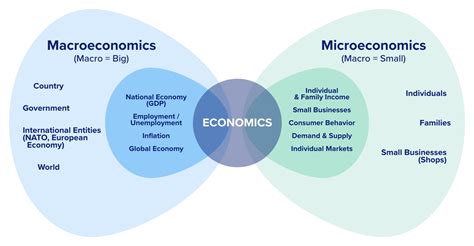Introduction
AP Macroeconomics and AP Microeconomics are two foundational courses in economics that provide students with the knowledge and skills necessary to understand the complex world of economics. While both courses cover essential economic concepts, they differ in their focus and scope. This guide provides a comprehensive comparison of AP Macroeconomics vs. AP Microeconomics, exploring their key differences and guiding students in making an informed decision about which course is right for them.

Key Differences: Macroeconomics vs. Microeconomics
| Feature | Macroeconomics | Microeconomics |
|---|---|---|
| Focus | Economy as a whole | Individual markets and firms |
| Scope | National and international economic issues | Behavior of consumers, firms, and government at the micro level |
| Variables | GDP, inflation, interest rates | Price, quantity, supply and demand |
| Policy Focus | Monetary and fiscal policies | Microeconomic policies such as regulation and taxation |
| Data Analysis | Aggregate data | Data on specific markets and firms |
Course Content: Macroeconomics vs. Microeconomics
AP Macroeconomics
-
Units 1-2: Macroeconomic Basics
- Measuring economic activity
- Economic growth and fluctuations
-
Units 3-4: Money and Banking
- The role of money in the economy
- The Federal Reserve and monetary policy
-
Units 5-6: Fiscal Policy and Economic Growth
- The role of government spending and taxes
- Economic growth and long-run economic performance
AP Microeconomics
-
Units 1-2: Core Concepts
- Supply and demand
- Consumer and producer behavior
-
Units 3-4: Market Structures
- Perfect competition
- Monopoly
- Oligopoly and monopolistic competition
-
Units 5-6: Market Failure and Government Intervention
- Externalities
- Public goods
- Market power
Which Course is Right for Me?
Choosing between AP Macroeconomics and AP Microeconomics depends on several factors:
- Career Goals: If you plan to pursue a career in economics, finance, or business, both courses are valuable, but microeconomics is considered more foundational.
- Prior Knowledge: If you have a strong foundation in basic economics, you may be more prepared for microeconomics.
- Interest: Choose the course that interests you the most. Engagement and motivation are key to success in any academic pursuit.
Benefits of Taking AP Macro or Micro
Macroeconomics:
- Develops a broad understanding of the economy
- Prepares students for citizenship and informed decision-making
- Provides a foundation for understanding economic news and policies
Microeconomics:
- Enhances critical thinking and analytical skills
- Provides a deeper understanding of market behavior
- Prepares students for careers in business, finance, and policymaking
How to Prepare for AP Macro or Micro
- Take a preparatory course: Many high schools offer AP Macroeconomics or AP Microeconomics courses.
- Self-study: Utilize textbooks, online resources, and practice materials.
- Join a study group: Collaborating with peers can enhance understanding and motivation.
- Practice exam questions: Regularly solve practice problems to test your knowledge and identify areas for improvement.
Real-World Applications
AP Macroeconomics and AP Microeconomics have numerous real-world applications:
- Macroeconomics: Evaluating government policies, understanding economic trends, forecasting economic growth
- Microeconomics: Designing pricing strategies, analyzing market competition, regulating industries
FAQs
1. Which course is harder, macro or micro?
Both courses have their challenges, but the difficulty level depends on individual strengths and interests.
2. Do I need to take both courses?
While both courses are valuable, they are not a prerequisite for each other. However, taking both can provide a comprehensive understanding of economics.
3. What is the average score on the AP Macro or Micro exam?
According to the College Board, the average score on the AP Macroeconomics exam is 2.8, while the average score on the AP Microeconomics exam is 2.9 (on a scale of 1 to 5).
4. What is the passing score on the AP Macro or Micro exam?
A score of 3 is generally considered a passing score on the AP Macroeconomics or AP Microeconomics exam.
5. What is the difference between GDP and GNP?
GDP (Gross Domestic Product) measures the total value of goods and services produced within a country’s borders, while GNP (Gross National Product) measures the total value of goods and services produced by citizens of a country, regardless of where it is produced.
6. What is the Federal Reserve’s target inflation rate?
The Federal Reserve aims to maintain an inflation rate of 2%.
7. What is a monopoly?
A monopoly is a market structure where a single firm has control over the majority of the market share, giving it significant market power.
8. What is an externality?
An externality is a cost or benefit imposed on a third party as a result of an economic activity.
